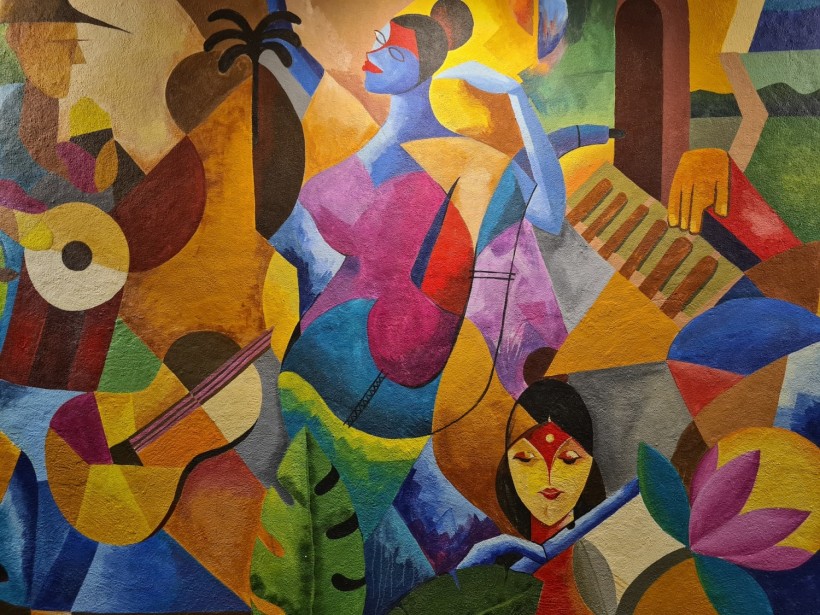Abstract art is one of the most important art movements of the 19th century. It revolutionized how we see and interpret art, and it continues to wow us to this day. If you've been curious about this movement, its influences, and its impact, this article will help educate you.
What is Abstract Art?
Abstract art is a form of art that does not represent reality but instead represents emotions, ideas, and feelings. It's often non-representational and does not attempt to mimic physical objects. Instead, abstract art is characterized by shapes, lines, colors, and textures.
Abstract art has a lot in common with other 20th-century art movements, like Expressionism, Futurism, Cubism, and Fauvism, which widened the gap between realism and non-realism.
Origins of Abstract Art
The first forms of abstract art appeared in the 19th century and were often landscape paintings or still-life images. The first purely abstract works were created by Wassily Kandinsky and Piet Mondrian, who experimented with color and geometric shapes in their paintings.
It's important to note that abstract art did exist prior to the 19th century, but it was called abstract art in the strictest sense. However, abstract art was rare as artists primarily painted for churches and wealthy benefactors who wanted works to represent stories or physical representations.
Abstract Expressionism
The next major shift in abstract art came in the mid-20th century with the rise of abstract expressionism. This movement was centered around the idea of spontaneous expression, and its proponents used abstract forms and colors to convey emotion and meaning.
Notable abstract expressionists include Jackson Pollock, Mark Rothko, and Willem de Kooning. New abstract artists are still painting incredible pieces and selling them online. You can check out Singulart's abstract catalog to shop for incredible paintings that fit well in your space.
Pop Art
Pop art, which emerged in the 1950s, was another major influence on abstract art. Pop artists such as Andy Warhol and Roy Lichtenstein used abstract shapes and colors to represent everyday objects in their work. This blurred the lines between abstract and representational art.
Many historians consider pop art as a response to "the mundane reality" and "painterly looseness" of abstract expressionism. It was also a revolutionary art style that sought to paint pop culture in another light, which was typically paradoxical, dynamic, and negative.
Contemporary Abstract Art
Today, abstract art continues to be a major influence in the art world. Contemporary abstract artists create works that explore the relationships between color, shape, and texture. They also often incorporate themes of nature, politics, and social issues into their work.
Digital Abstract Art
In the 21st century, abstract art utilizes the digital space to make stunning but often bizarre images. There are several offshoots of early 19th-century abstract art that likely wouldn't exist without computers, such as digital art, neo-Dada, lyrical abstraction, and geometric abstraction.
It's not necessarily because this type of art can only be created in a digital space, but these strange styles may have only reached a niche audience without the internet's reach. Color field painting and monochrome painting, for example, had a large following well before the internet.
The Minimalist sculptures of Donald Judd and the painting of Frank Stella are considered new permutations of abstract art. Newer artists impacting the space include Patrick Heron, Helen Frankthaler, Richard Diebenkorn, Joan Mitchell, Sam Francis, and Robert Motherwell.
How Can Businesses Benefit from Abstract Art?
Abstract art can be a great addition to any business. It can create an eye-catching and unique aesthetic while also giving customers a sense of the company's values and culture. It can also be used to create a relaxing environment, which boosts productivity, efficiency, and wellness.
Abstract art is a great conversation starter, giving people something to talk about and connect over. It's also fun and very human to discuss art with our fellow coworkers and managers.
Abstract Art and Its History
In conclusion, abstract art has a long and interesting history. It has evolved and changed over the 19th, 20th, and 21st centuries and continues to be a major influence in the art world today.
Businesses can benefit from abstract art, as it can help to create a unique and eye-catching aesthetic while also conveying the company's values and culture. Plus, it gets people talking.
* This is a contributed article and this content does not necessarily represent the views of sciencetimes.com















